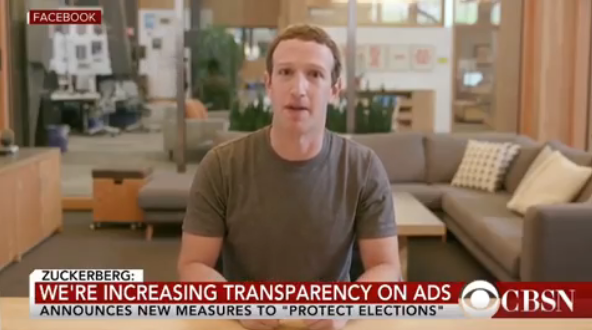Facebook has promised to leave up a deepfake video of Mark Zuckerberg

The firm’s emerging policy on deepfakes seems to be to leave them up, but flag them as fake.
The news: A deepfake video of Mark Zuckerberg was uploaded to Instagram, which Facebook owns, earlier this week. In the clip, Zuckerberg talks about being “one man, with total control of billions of people’s stolen data, all their secrets, their lives, their futures.” It was created using a two-year-old clip of Zuckerberg talking about Russian interference in the 2016 US election. You can watch it here.
Who made it? It was created by artists Bill Posters and Daniel Howe in partnership with Israeli AI startup Canny. It’s one of several made by the group as part of Spectre, an exhibition that took place at the Sheffield Documentary Festival this week.
An emerging policy: Last month, Facebook decided not to remove a video of Nancy Pelosi that had been doctored to make her seem drunk (though it was not made using deep learning, so technically is not a deepfake). Instead, Facebook said that if third-party fact-checkers found it to be fake, it would add a few disclaimers informing users, and rank it further down on people’s news feeds. This seems to be its new rule: leave manipulated videos up, but make it clear they are not real.
A growing problem: The speed and ease with which anyone can now make and spread a deepfake has alarming implications, and policymakers are increasingly wising up to the issue. Tomorrow the US will hold its first hearing on deepfakes, and Representative Yvette Clarke of New York will introduce a bill that attempts to clamp down on them.
Sign up here to our daily newsletter The Download to get your dose of the latest must-read news from the world of emerging tech.
Correction: This article originally stated that the deepfake was created by UK advertising agency Canny. That is incorrect, and the article has been amended to explain it was made by an Israeli company of the same name.
Keep Reading
Most Popular
Large language models can do jaw-dropping things. But nobody knows exactly why.
And that's a problem. Figuring it out is one of the biggest scientific puzzles of our time and a crucial step towards controlling more powerful future models.
The problem with plug-in hybrids? Their drivers.
Plug-in hybrids are often sold as a transition to EVs, but new data from Europe shows we’re still underestimating the emissions they produce.
Google DeepMind’s new generative model makes Super Mario–like games from scratch
Genie learns how to control games by watching hours and hours of video. It could help train next-gen robots too.
How scientists traced a mysterious covid case back to six toilets
When wastewater surveillance turns into a hunt for a single infected individual, the ethics get tricky.
Stay connected
Get the latest updates from
MIT Technology Review
Discover special offers, top stories, upcoming events, and more.